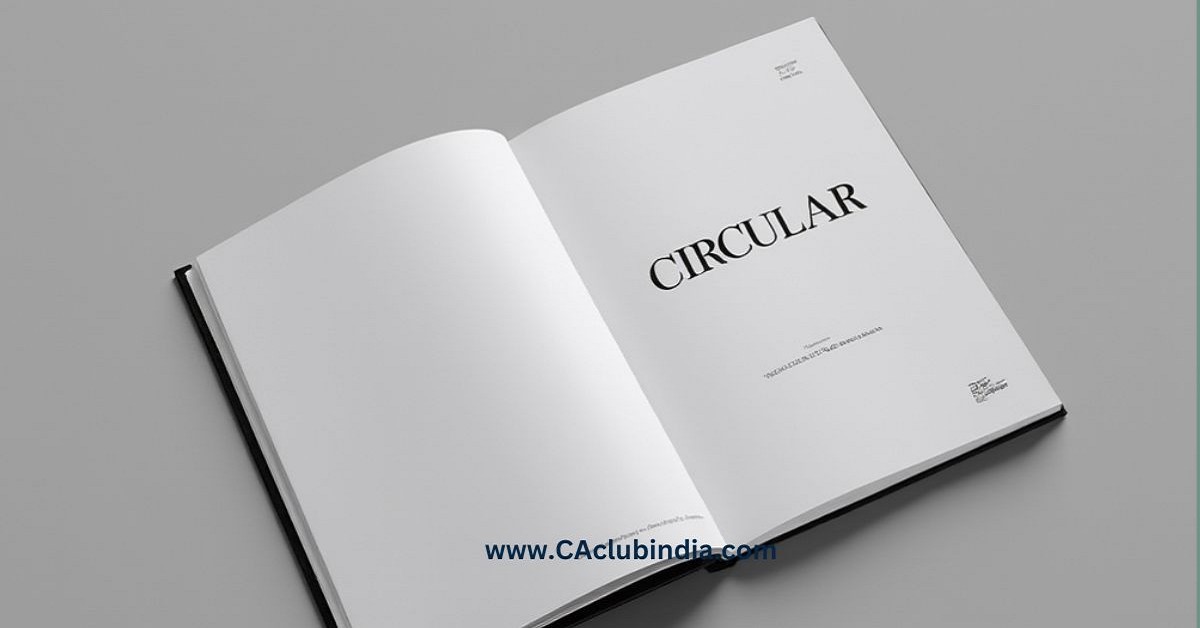The Central Board of Indirect Taxes and Customs (CBIC) has provided crucial clarification regarding the scope of the "as is / as is, where is basis" terminology used in previous GST circulars. Issued on October 11, 2024, Circular No. 236/30/2024-GST follows the recommendations made by the GST Council during its recent meetings.
This clarification aims to eliminate ambiguity in the interpretation of these terms, which are commonly used in GST-related transactions and contracts. The circular explains how goods sold on an "as is" or "as is, where is" basis are to be treated under GST law, offering clear guidance to businesses engaged in such transactions. This move is expected to streamline tax compliance and ensure consistency in the application of GST provisions across industries.
The clarification is essential for businesses involved in the sale of used goods, repossessed assets, and similar transactions, ensuring they are well-informed about their GST liabilities.

Text of the Circular has been mentioned below
Instances were brought to the notice of the Board pertaining to the prevailing doubts among the field formations/trade as regards the scope of regularization on "as is" or "as is, where is basis" vide various GST Circulars issued for clarification regarding applicable GST rates and appropriate classification of specified goods or service or both on the basis of recommendation of the GST Council in its various meetings.
2. The GST Council in its 54th Meeting held on 9th September 2024 has recommended issuance of clarification to clarify the intent behind the regularization done in the past meetings. Therefore, this Circular is being issued in exercise of power under Section 168 of CGST Act 2017 to clarify scope of "as is" or " as is, where is basis".
3. Circulars have been issued based on recommendation of the GST Council wherein GST non-payment/ short-payments for past period have been regularized "As is" or As is, where is basis" in certain cases for supply of goods or services or both. Regularization for the past period has been done, on the recommendations of the Council, in situations, such as, where genuine doubts have arisen as there are two competing entries with different rates in the notifications or issues have arisen due to diverse interpretation resulting in a situation where some suppliers have paid a lower rate of GST (including nil rate on account of an exemption entry) and some suppliers have paid a higher rate of GST. It has also been clarified that where taxpayers had paid at the higher GST rate, in such situations they shall not be entitled to any refund.
4. The phrase 'as is where is' is generally used in the context of transfer of property and means that the property is being transferred in its current condition, whatever this condition happens to be and the transferee of property has accepted it with all its faults and defects, whether or not immediately apparent. In the context of GST, the phrase 'regularized on as is where is' basis means that the payment made at lower rate or exemption claimed by the taxpayer shall be accepted and no refund shall be made if tax has been paid at the higher rate. The intention of the Council is to regularize payment at a lower rate including nil rate due to the tax position taken by taxable person, as full discharge of tax liability. The tax position of a taxable person is reflected in the returns filed by the person where the applicable rate of tax (or relevant exemption entry) on a transaction/supply is declared.
5. Thus, in cases where the matters have been regularized on "as is" or " as is, where is basis", in case of two competing rates and the GST is paid at lower of the two rates, or at nil rate where one of the competing rates was nil under notification entry, by some suppliers while other suppliers have paid at higher rate, payment at lower rate shall be treated as tax fully paid for the period that is regularized.
Illustration 1
In a situation where certain taxpayers have paid 5% GST on supply of "X", while some have paid 12% and the GST Council recommends to reduce the rate to 5% prospectively and regularize the past on "as is where is basis" which is notified on 1.12.2023, this means that for the period prior to 1.12.2023, the 5% GST paid by tax payer will be treated as tax fully paid and they would not be required to pay duty differential of 7% between 5% and 12%. For those taxpayers who have paid 12% GST, no refund would be allowed.
Illustration 2
In a situation where certain taxpayers have paid 5% GST on supply of "X" while some have paid nil duty due to the genuine doubt that there was an exemption entry for "X", and the GST Council recommends to clarify that the applicable rate is 5% and to regularize the past on "as is where is basis", in view of prevailing genuine doubts, which is notified on 1.12.2023, this means that for the period prior to 1.12.2023, nonpayment of GST and declaring such transactions as exempted supply in their return by the taxpayer will be treated as full discharge of tax liability and they would not be required to pay duty differential of 5 % between Nil and 5%. For those taxpayers who have paid 5%, no refund would be made.
Illustration 3
In a situation where the interpretational issue is between 5% and 12% rates and some taxpayers have paid 5 % , others have paid 12% while certain tax payers have not paid GST on supply of "X", and the GST Council recommends to clarify that the applicable rate is 12% and regularize the past on "as is where is basis" which is notified on 1.12.2023, this means that for the period prior to 1.12.2023, the 5% GST paid by tax payer will be treated as tax fully paid and they would not be required to pay duty differential between 5% and 12% . For those tax payers who have paid 12%, no refund would be made. However, the regularization would not apply to situations where no tax has been paid. In such cases, the applicable tax i.e. 12% shall be recovered.
Accordingly, suitable instructions shall be passed on to the field formations under your charge.
Official copy of the circular has also been attached






 CAclubindia
CAclubindia

